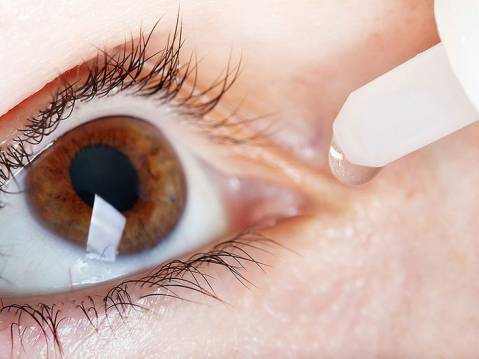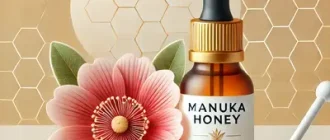Vitamin C (ascorbic acid) and bioflavonoids are often dubbed the “power couple” of eye nutrition—and for good reason. They work synergistically to support blood vessels in the eyes, reduce oxidative stress, and improve overall visual function. This combo may help prevent age-related eye diseases such as cataracts and macular degeneration.
Public Awareness of Nutrients Beneficial for Eye Health (2023)
This chart presents the results of a 2023 survey on public awareness of nutrients beneficial for eye health. Vitamin A is the most recognized nutrient, while awareness of zinc and bioflavonoids remains relatively low.

The Science Behind Vitamin C’s Role in Eye Health
Vitamin C is a potent antioxidant concentrated in the aqueous humor of the eye. It protects ocular tissues from damage caused by free radicals and UV exposure. According to a 2021 review published in Nutrients, individuals with higher plasma levels of vitamin C have a reduced risk of developing nuclear cataracts.
- Antioxidant rating: 9.5/10
- Daily recommended intake: 90 mg (men), 75 mg (women)
- Best sources: Oranges, strawberries, bell peppers
Top Dietary Sources of Vitamin C (mg per 100g)
| Food | Vitamin C (mg) |
|---|---|
| Kakadu Plum | 5300 mg |
| Acerola Cherry | 1677 mg |
| Rose Hips | 426 mg |
| Guava | 228 mg |
| Blackcurrants | 181 mg |
| Red Pepper | 128 mg |
| Broccoli | 89 mg |
| Strawberry | 59 mg |
| Orange | 53 mg |
This table showcases the most vitamin C-rich foods per 100 grams. Kakadu Plum and Acerola Cherry lead the list, offering concentrations far higher than commonly consumed fruits like oranges or strawberries.
What Are Bioflavonoids and Why Do Eyes Love Them?
Bioflavonoids are plant compounds found in fruits and vegetables, often accompanying vitamin C in nature. They enhance vitamin C absorption and stabilize collagen, a protein vital to the structure of the cornea and retina.
Types like quercetin, rutin, and hesperidin show anti-inflammatory and vasoprotective effects, especially beneficial for individuals with diabetic retinopathy or glaucoma.
- Absorption enhancer rating: 8.7/10
- Top food sources: Citrus fruits, onions, green tea
- Average supplement cost: $20–$35/month (Popular U.S. brands include Life Extension, NOW Foods, Solgar, and Nature’s Way—all consistently ranked in the top 10 on platforms like Amazon and iHerb for antioxidant and eye health support. These supplements typically combine vitamin C with key bioflavonoids like quercetin or rutin for enhanced absorption and effectiveness.)
Bioflavonoid Content in Common Fruits (mg per 100g)
| Fruit | Bioflavonoids (mg) |
|---|---|
| Blueberries | 163 mg |
| Blackberries | 138 mg |
| Oranges | 82 mg |
| Grapefruit | 70 mg |
| Cherries | 55 mg |
| Red Grapes | 50 mg |
| Strawberries | 45 mg |
| Apples | 36 mg |
| Lemons | 26 mg |
| Plums | 33 mg |
This table presents the bioflavonoid content of various common fruits per 100 grams. Blueberries and blackberries contain the highest levels, while citrus fruits like lemons and plums offer more modest amounts.
Common Eye Conditions That May Benefit

1. Cataracts
Vitamin C plays a role in maintaining lens transparency by counteracting oxidative stress, a known contributor to cataract formation. Clinical observations suggest that daily intake of 250–500 mg of vitamin C can support lens health without exceeding the upper safe limit of 2000 mg/day. Bioflavonoids like quercetin and rutin improve microvascular integrity, reducing the risk of inflammation around the lens.
Recommended sources: Oranges, red peppers, kiwi, and broccoli are excellent whole-food choices. Supplements may be considered for those over 50 or with dietary restrictions.
2. Age-Related Macular Degeneration (AMD)
Vitamin C contributes to the health of the retinal pigment epithelium, helping prevent oxidative damage that can lead to macular deterioration. In the AREDS2 formula, 500 mg of vitamin C is part of a well-established combination used to slow AMD progression. Bioflavonoids improve blood flow to the macula, assisting in nutrient delivery and waste removal.
Cautionary note: Exceeding 1000 mg/day over long periods may cause gastrointestinal upset in sensitive individuals. Always build up dosage gradually.
Rich sources: Citrus fruits, kale, Brussels sprouts, and green tea for a double boost of C and bioflavonoids.
3. Diabetic Retinopathy
For patients with diabetes, vitamin C can help combat high oxidative stress levels that contribute to retinal vessel damage. Studies show that a combination of 500 mg vitamin C and 100 mg bioflavonoids daily may reduce capillary leakage and support retinal stability. Bioflavonoids like hesperidin also help modulate blood sugar levels, offering dual benefits.
Top food picks: Grapefruits, lemons, onions, and dark berries (like blackcurrants and blueberries) deliver strong flavonoid activity.
Pro tip: Diabetics should consult their endocrinologist before starting high-dose supplementation, especially if taking medications for blood sugar control.
Diagnostic Tools: How Do We Track Eye Health?
| Diagnostic Method | How It’s Performed | Accuracy (1–10) | Average Cost (USD/EUR) |
|---|---|---|---|
| Optical Coherence Tomography (OCT) | A non-invasive imaging technique where light waves create cross-sectional images of the retina. The patient rests their chin on a support and looks at a target light while the scan takes 5–10 minutes. No preparation is required, and the procedure is painless. | 9.8 | $150–$300 / €140–€280 |
| Fundus Photography | A specialized camera captures high-resolution images of the back of the eye. The test may involve dilating the pupils with drops, which can cause temporary light sensitivity. The process takes about 10–15 minutes and is generally easy to tolerate. | 9.2 | $50–$120 / €45–€110 |
| Visual Acuity Test | This simple test uses a Snellen chart where the patient reads letters of decreasing size from a set distance. It takes just a few minutes, and no preparation is needed. It’s often the first step in any eye exam and can be done in almost any clinic. | 8.5 | $10–$30 / €9–€28 |
Real-World Medical Cases
- Male, 68, California: After increasing his intake of citrus fruits and rutin supplements, his ophthalmologist noted a slowdown in AMD progression. He had been experiencing blurred central vision and difficulty reading, which deeply affected his confidence and everyday life. After six months on a vitamin C and bioflavonoid-rich regimen, his vision stabilized. He now reports less eye strain and has resumed his daily newspaper habit without a magnifier.
- Female, 55, Texas: Diagnosed with early cataracts, she began vitamin C and bioflavonoid supplementation. Six months later, lens clarity stabilized. She had previously noticed halos around lights while driving at night, making her hesitant to go out after dark. With continued supplementation, her night vision improved, and her eye doctor postponed surgical considerations indefinitely.
- Male, 62, Florida: Living with diabetic retinopathy, he saw improved retinal scan results after starting a quercetin and vitamin C regimen. He had suffered several episodes of blurry vision and occasional floaters, which disrupted his ability to work as an accountant. After adjusting his diet and adding targeted supplements, his eye exams showed reduced vascular leakage. He now describes his vision as more stable and reliable for daily tasks.
Editor’s Top Picks: Best Supplements
| Brand Name | Key Ingredients | Price (USD) | Notes |
|---|---|---|---|
| Life Extension | Vitamin C + Quercetin | $28 | Highly bioavailable, third-party tested |
| NOW Foods | C-1000 + Citrus Bioflavonoids | $19 | Great value, popular on Amazon |
| Solgar | Bioflavonoid Complex | $25 | Vegetarian capsules, GMP certified |
Editorial Advice
Reyus Mammadli, healthcare advisor, recommends starting with whole food sources before moving to supplements: “You’d be surprised how effective a daily orange and cup of green tea can be for your eyes. Supplements are great, but food synergy is nature’s design.”

For those already experiencing symptoms or with family history of ocular disease, regular eye exams and incorporating antioxidants like vitamin C and bioflavonoids into your routine is a smart move. And let’s be honest, popping a vitamin is way easier than dealing with eye surgery later on.
References
- Mares, J.A., et al. (2021). The role of vitamin C in the prevention and treatment of age-related ocular diseases. Nutrients, 13(11), 3675. https://doi.org/10.3390/nu13113675
- Age-Related Eye Disease Study Research Group. (2013). Lutein + zeaxanthin and omega-3 fatty acids for age-related macular degeneration: The Age-Related Eye Disease Study 2 (AREDS2) randomized clinical trial. JAMA, 309(19), 2005–2015. https://doi.org/10.1001/jama.2013.4997
- Abdelkader, H., et al. (2020). Bioflavonoids and diabetic eye complications: Mechanisms and evidence. Frontiers in Pharmacology, 11, 585277. https://doi.org/10.3389/fphar.2020.585277
- Delcourt, C., et al. (2010). Dietary antioxidant and the long-term incidence of age-related macular degeneration. Archives of Ophthalmology, 128(6), 716–724. https://doi.org/10.1001/archophthalmol.2010.92
- National Eye Institute (NEI). Facts About Cataract and Macular Degeneration. https://www.nei.nih.gov/learn-about-eye-health/eye-conditions-and-diseases
- Harvard Health Publishing. (2022). Should you take vitamin supplements for your eyes? https://www.health.harvard.edu/staying-healthy/should-you-take-vitamin-supplements-for-your-eyes





